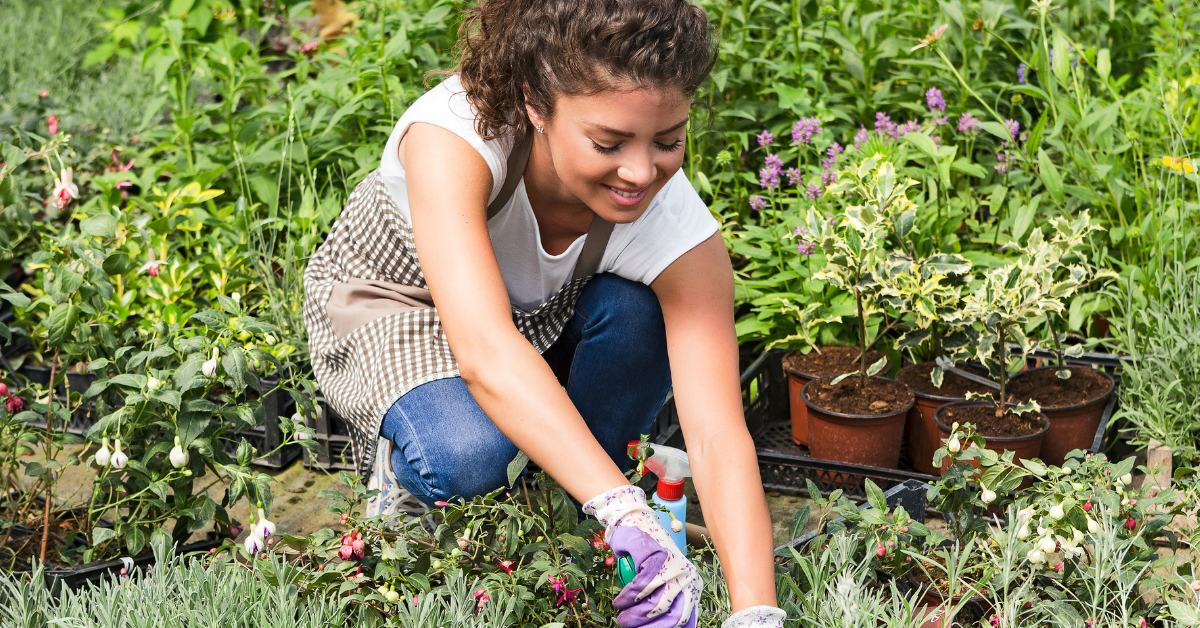It’s garden season in the Pacific Northwest where I live, and my garden room is bulging with salad greens, broccoli and over a hundred tomato plants waiting for warmer weather before they can go outside and into the ground. Squash and peppers won’t be far behind. Like millions of others throughout the Western world, the recent pandemic has encouraged us to expand our garden and grow more vegetables. We hope that this year at least 50% of what we eat will come from the garden.
I have so enjoyed watching the growth of the community garden movement, which grew in the fertile ground of the 2008 recession and has gained even more momentum over the last year. The encouragement to spend more time outside has spurred families and churches to expand their gardens to provide for themselves and their local food banks.
But at the same time, there is often a total disconnect between what happens in the garden and our zoom worship services. In addition, now as we head back into church, many of us are relieved to leave behind our outdoor gatherings. Yet it seems to me that gardening is one of the most profound acts of worship we can engage in. God’s first act after completing creation was to plant a garden—the garden of Eden. And in the first sighting of Jesus after the resurrection, he is mistaken by Mary Magdalene for the gardener because that is precisely what he is—the gardener of the new creation.
So much of our garden activity is performed kneeling, in the position of prayer and supplication. I kneel to weed, to plant, and to harvest. In this position I often find myself meditating and praying. If I am troubled by some seemingly insurmountable problem, there is no better place to thrash it out than on my knees in the garden. If I am irritable or depressed, there is no better therapy than weeding.
However, there is far more than these things that makes gardening a worshipful act. I often tell people that I read about the life, death, and resurrection of Christ in the Bible, but in the garden I experience it. Every time I plant a tiny misshapen seed and watch it burst into life from its earthy tomb I feel as though I have seen the Easter story reenacted.
Early Celtic Christians were very aware of this. Three days before sowing, farmers would sprinkle the seed with water in the name of the Father, Son and Holy Spirit. If possible they would plant on a Friday. The moistening hastened the seed’s growth and planting on Friday was always a reminder of Christ’s death and burial. Planting was always symbolic of the planting of Christ, the seed of the new world from which resurrection life will come for all humankind as well as creation.
We have just entered the Easter season, and are rapidly heading towards Earth Day, giving us the perfect time to not only encourage our congregations to get outdoors, but also to help them make connections between the garden and their faith. Several years ago when Earth Day and Good Friday converged, I wrote a liturgy that brought these observances together. I found I could not stop there, because the story of God in the garden does not stop there. On the following Easter Sunday I expanded this service into a new liturgy which I called: Jesus Has Risen, A New Creation Has Begun to incorporate the resurrection of Christ as well.
There are other wonderful and worshipful lessons. I read about the faithfulness of God to Israel in the Old Testament, but I experience it every time I watch the rain fall and nourish the seeds that have been planted. I read about the miracle of the fish and loaves, but I experience just as profound a miracle every time I am overwhelmed by the generosity of God’s harvest. I hold an apple seed in my hand and marvel at the hundreds, if not thousands, of apples a seed like this has provided us with over the last 10 years.
So perhaps this summer we should not grumble because COVID has forced us to take our worship outside. Maybe we should instead rejoice in the garden experiences and curate a whole new experience for our congregations. In doing so, the gospel stories come alive in the garden, not just because we understand more fully the agricultural parables which Jesus so often used, but also because the garden is the place in which we can truly anticipate God’s promise for the future. In the garden, as we watch the plants grow and bear fruit in their season, it is not hard to believe that one day all creation will indeed be made whole, restored and renewed to become all that God intends it to be.
Recently tasked with planning liturgies or services at your church? Check out Faith+Lead Academy’s course A Lay Leader’s Guide to Planning Worship Experiences.



